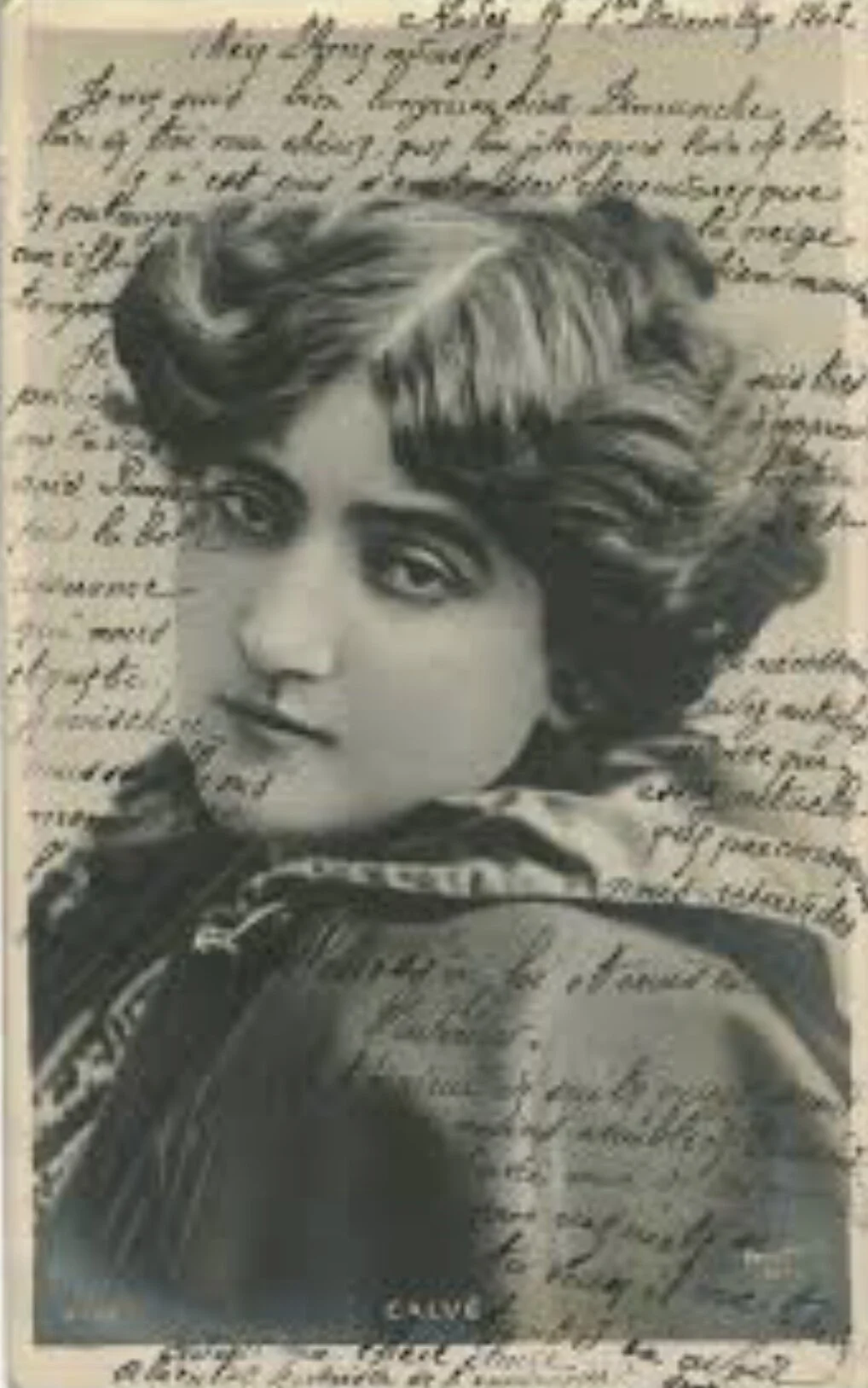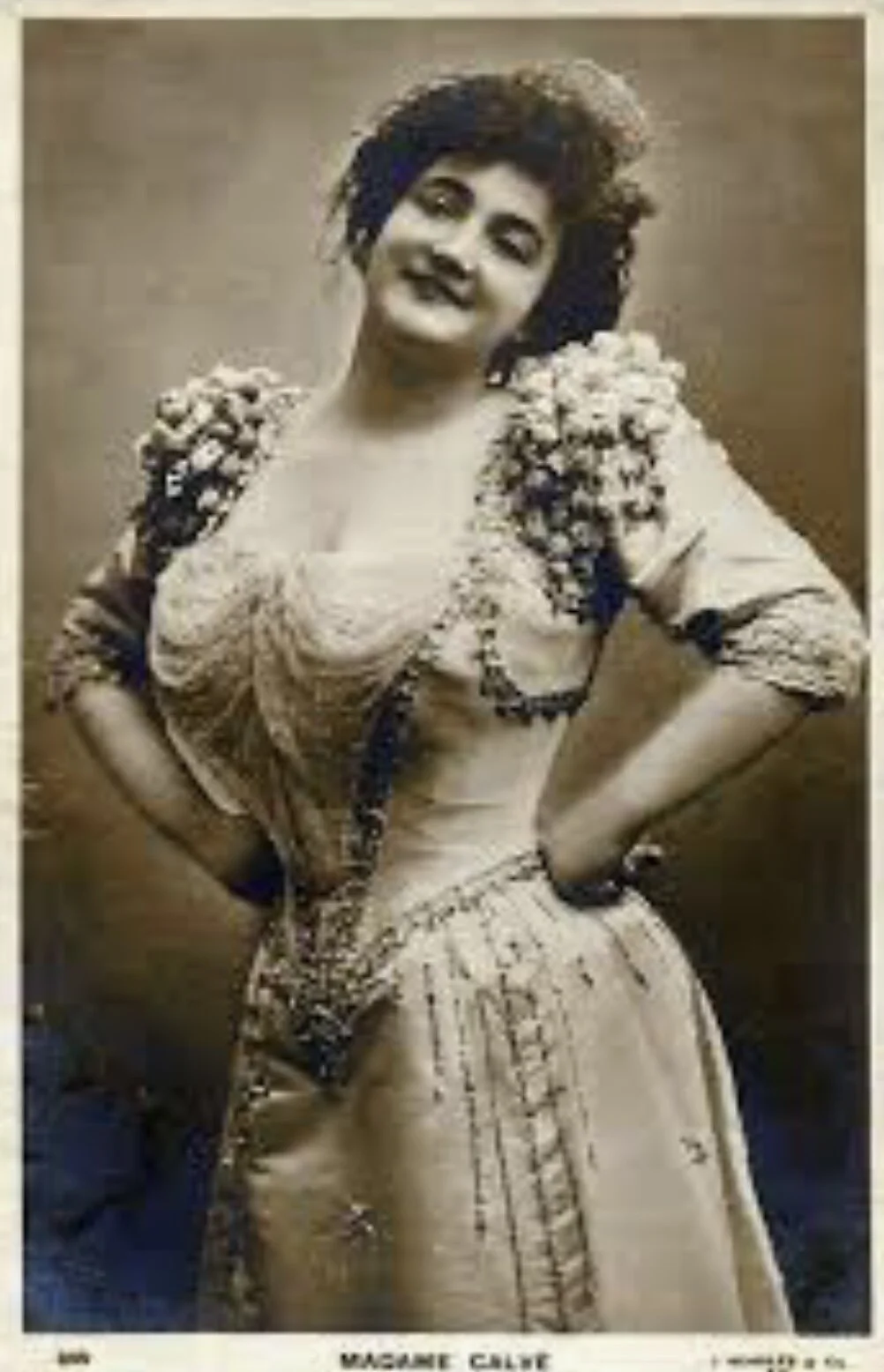Emma Calvé: Advent Calendar of Song: Day Twenty-Four
If you thought you were out of the thickets of whoosh-and-scratch 78rpm records, you didn’t know me well enough. Still, today’s song is short – so short that it was recorded, in 1908, as one of a pair on one side. The second song breaks the mood, so I’m grateful to YouTube for this 1’50” cut of the first song alone. As you’ll hear, it’s like nothing else.
Emma Calvé (1858-1942) was the most internationally celebrated French singer of the so-called Belle Époque (1880-1914). She was initially trained by the most celebrated teacher of the day, Mathilde Marchesi (1821-1913), who also taught Nellie Melba, Frances Alda, Selma Kurz, Emma Eames, and other top sopranos of the late nineteenth century era. But Calvé didn't stay long with Marchesi; she had other ambitions. She was thunderstruck, when visiting Italy, by the acting of the great Italian actress Eleonora Duse; she used her observations of Duse as part of her training in stage craft. In consequence, she became one of the great actors of opera. Later, when she was eleven years into her professional career, she underwent a third kind of training, in Rome, with Domenico Mustafà (1829-1912), the last castrato head of the Sistine Chapel Choir. He wanted her to study with him for longer than she; but – she was already in her early thirties and had sung in important theatres in France, Italy, and Belgium - her career could be paused no longer. Thanks to him, she had gained another half-octave at the top of her range (what was called her “fourth voice”); in particular, he had taught her how to sing with her mouth tight shut, to develop her command of head tones.
She had a vocal and dramatic range that took her from high coloratura (Lucia di Lammermoor) to intense modern music-drama. She created roles for the composers Mascagni and Massenet; she became the dominant interpreter of Bizet’s Carmen of her day. In the late 1890s, she and Fernando de Lucia (remember Day Thirteen?) were the world’s foremost partnership in Carmen and the new verismo operas; they both had good techniques that enabled them to sing and to record into their late fifties and even later. You can find her Carmen on YouTube. Even to people who had seen the 1875 original production, Calvé’s became definitive.
Today, though, I’m including her famous recording of the folk song “Ma Lisette.” She sings just two verses, the second verse with swaggering attack, with slightly changed words from those I’ve found on line. I love the single wordless notes with which she follows each line - and then come the ascents at the end of each verse: top A at the end of the first verse, top D at the end of the second. Those ascents are exceptional examples of “floating”; that high D, approached from an octave below with a quick portamento, lasts almost ten seconds. https://www.youtube.com/watch?v=-lfPUb4ovqQ
J'entends ma Lisette, j'entends dans les bois
J'entends dans les bois une voix qui m'appelle
J'entends dans les bois une si belle voix
I hear my Lisette, I hear in the woods
I hear in the woods a voice calling me
I hear in the woods such a beautiful voice
Ton cœur ma Lisette est comme un vaisseau
Est comme un vaisseau qui s’en va (?)à la nage(?)
Est comme un vaisseau une (?) (?)
Your heart, my Lisette, is like a ship
Is like a ship that’s going to swim
Is like a ship…(?)…
<Traditional>
What’s floating? In classical singing, the singer sends what’s known as “a column of air” from the lungs up into the head. Chest and head lend vibrancy and resonance to the bottom and top of the voice (the vocal chords matter, but are best left to function automatically). Then, when the column of air resonates solely in the upper part of the head, some women singers can lighten the pressure on top notes and emit them softly, with seeming relaxation. Those quiet top notes, which can have a resonance as if coming from high above the singer, are called “floating” because they seem to be floating high on that column of air.
Not all women singers can float. There’s a famous story about Maria Callas having lunch with Elisabeth Schwarzkopf in the restaurant at La Scala, probably in 1954. The two sopranos admired each other (Schwarzkopf’s husband, Walter Legge, directed all Callas’s great recordings from the 1950s), but Schwarzkopf could float and Callas couldn’t: Schwarzkopf demonstrated how to float, while Callas prodded and felt in frustration and the rest of the restaurant clientele watched in amazement. Callas mastered the floating technique for a few isolated examples, but it was never part of her home terrain. (The two women recorded Puccini’s Turandot together in 1957, Callas in the title role, Schwarzkopf as the slave girl Liù: Schwarzkopf floats plenty there.) Some other sopranos, notably Montserrat Caballé, are so much in control of floating that it becomes something of a bore.
Even by floating standards, though, Emma Calvé’s topmost notes in “Ma Lisette” are uncanny. The whole song makes you feel, kinaesthetically, how “the column of air” functions in the singer’s body and head. Even though none of us could reproduce those notes, she makes us feel them in our own bodies and heads. Thank you, Mustafà; thank you, the technique of the castrati.
What’s folk music? You don’t expect a noted Carmen to sing a country song and transcend its naivety so as to give it these notes of suspended purity. And though I’m not interested by purity when it's about negation, I’m enthralled by purity that comes from a voice of dramatic skill and memorable eloquence.


